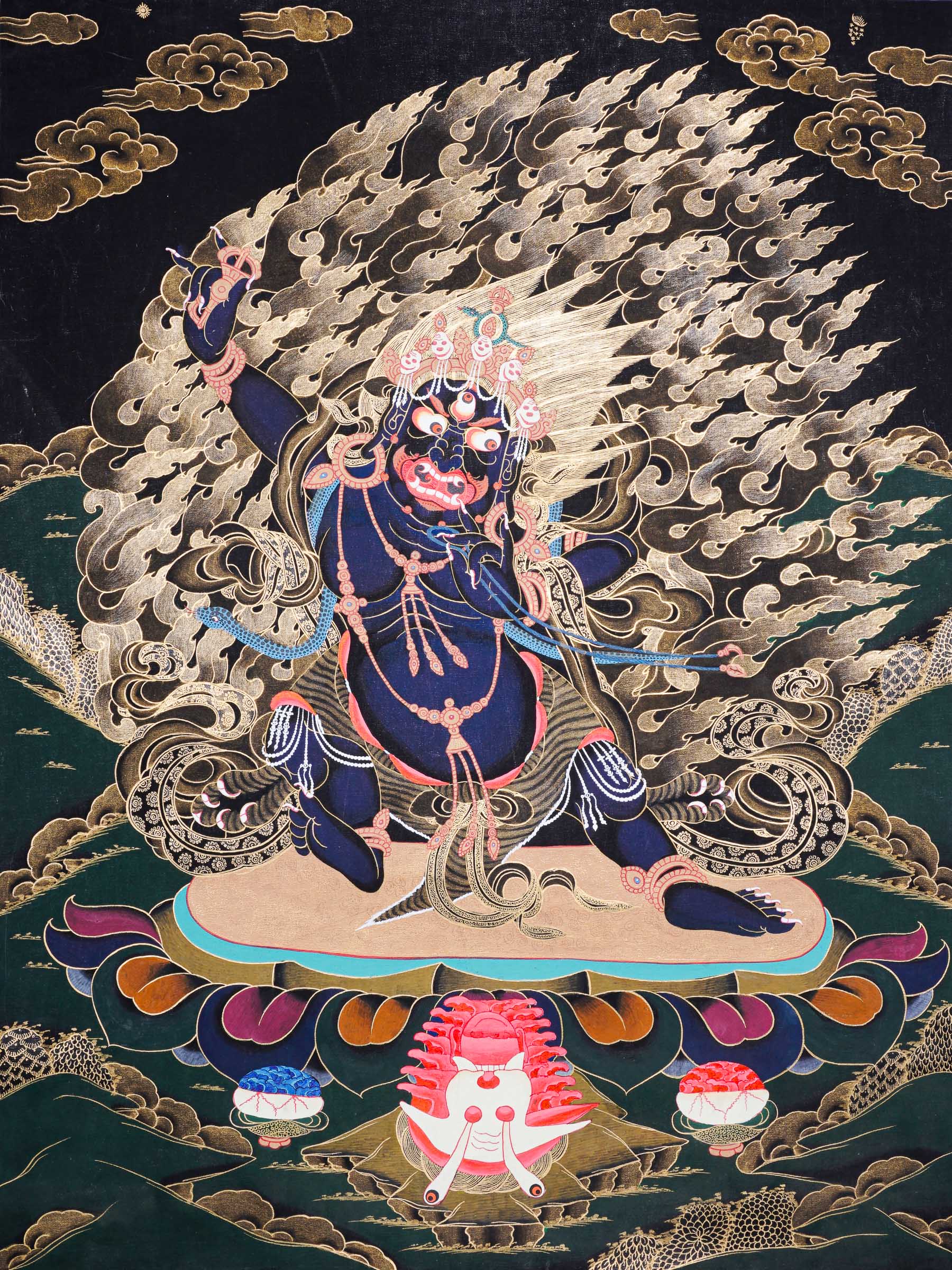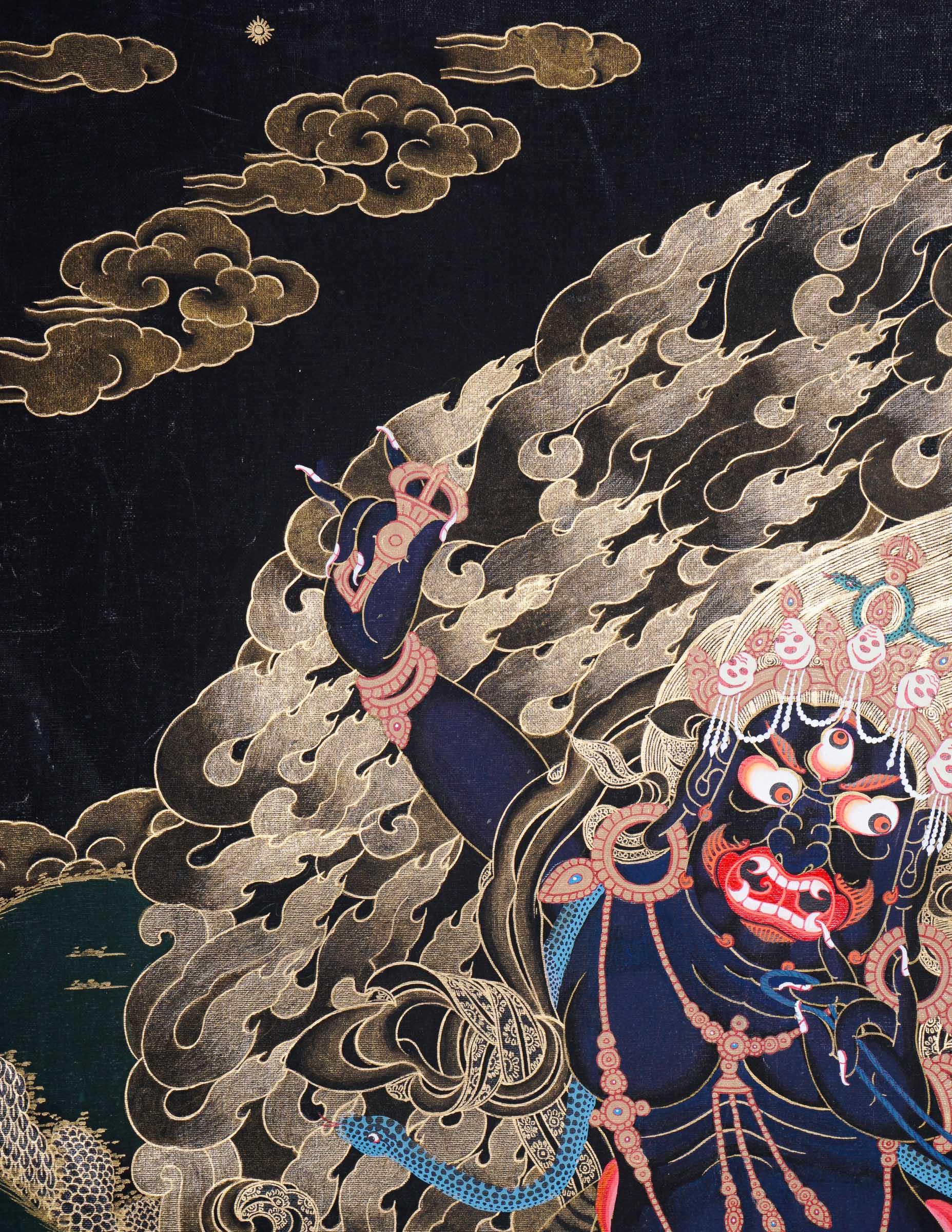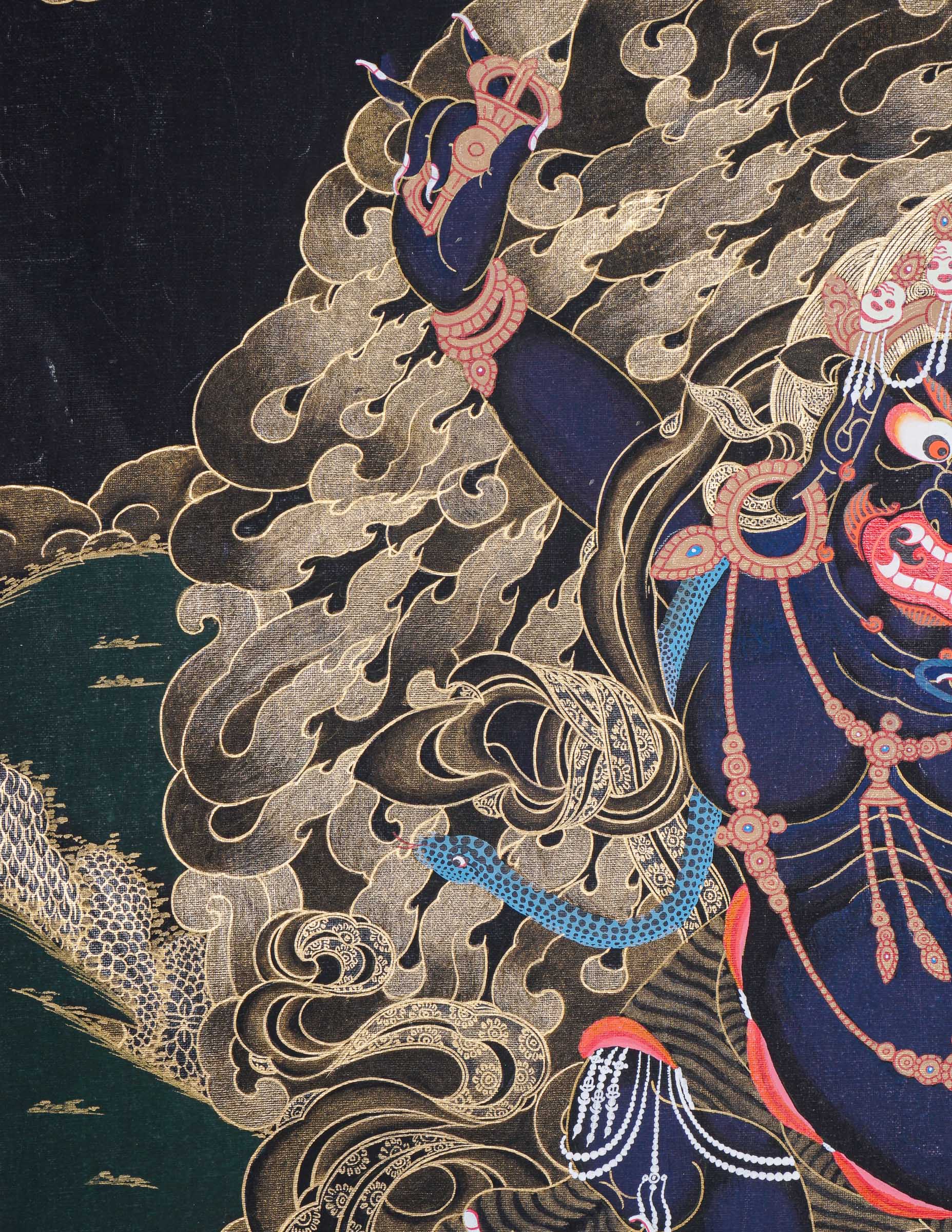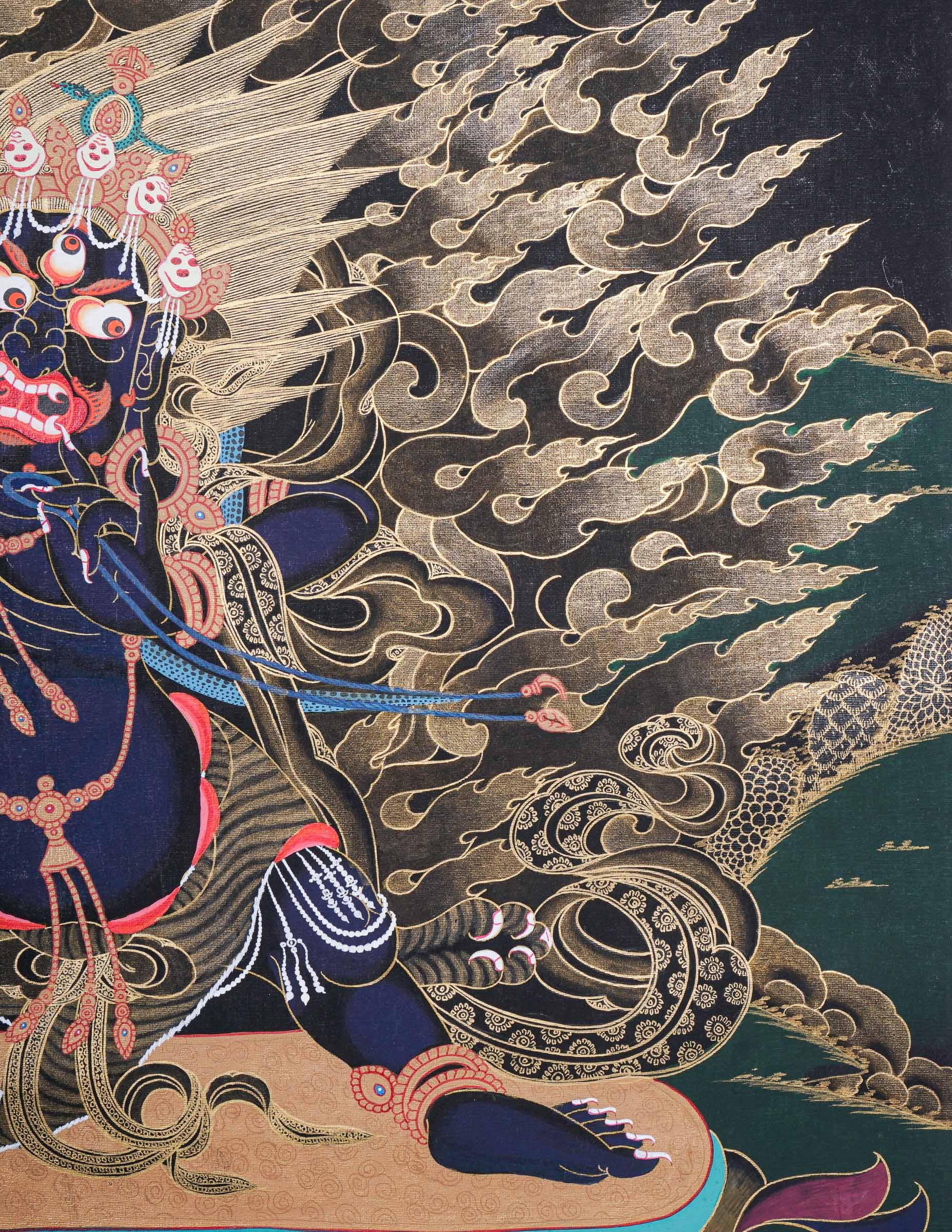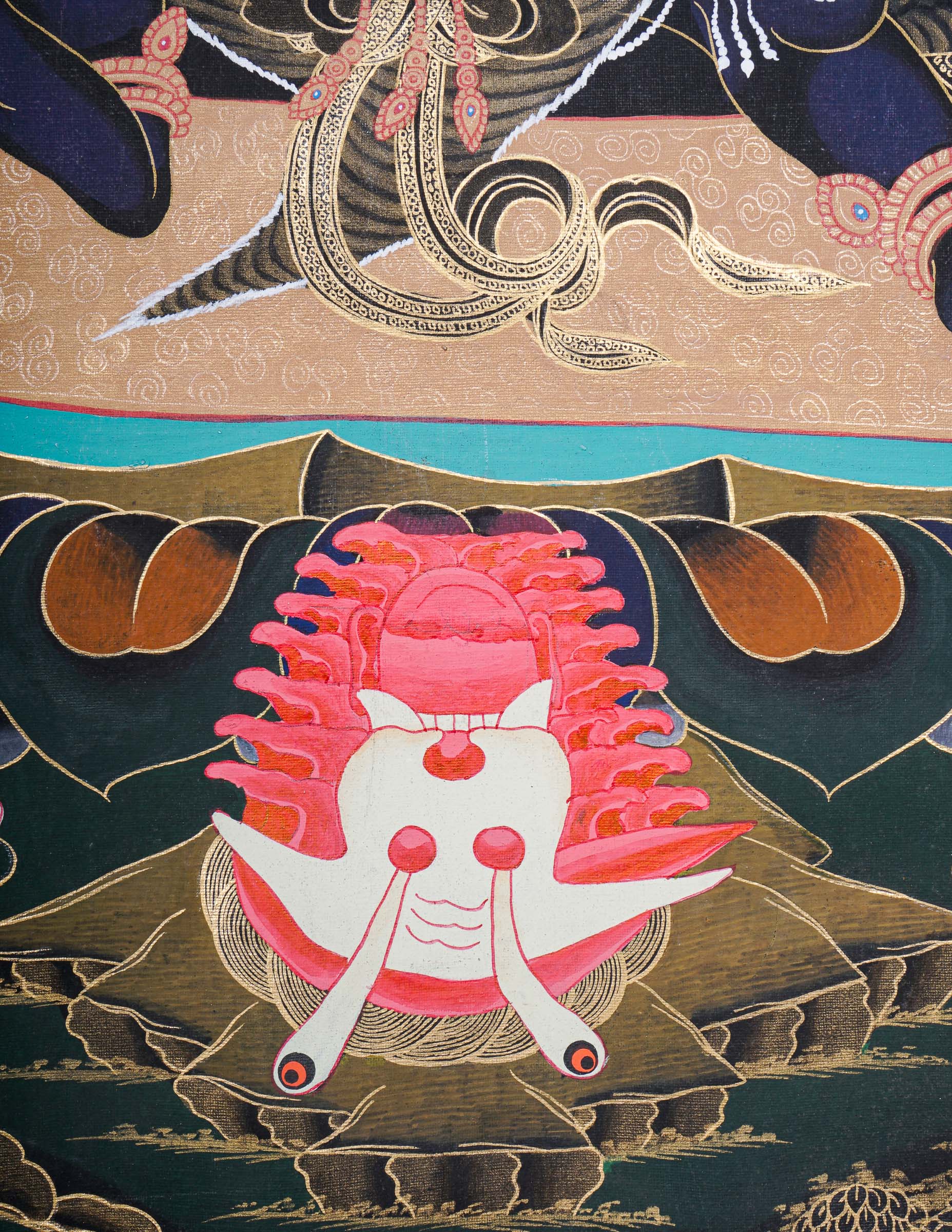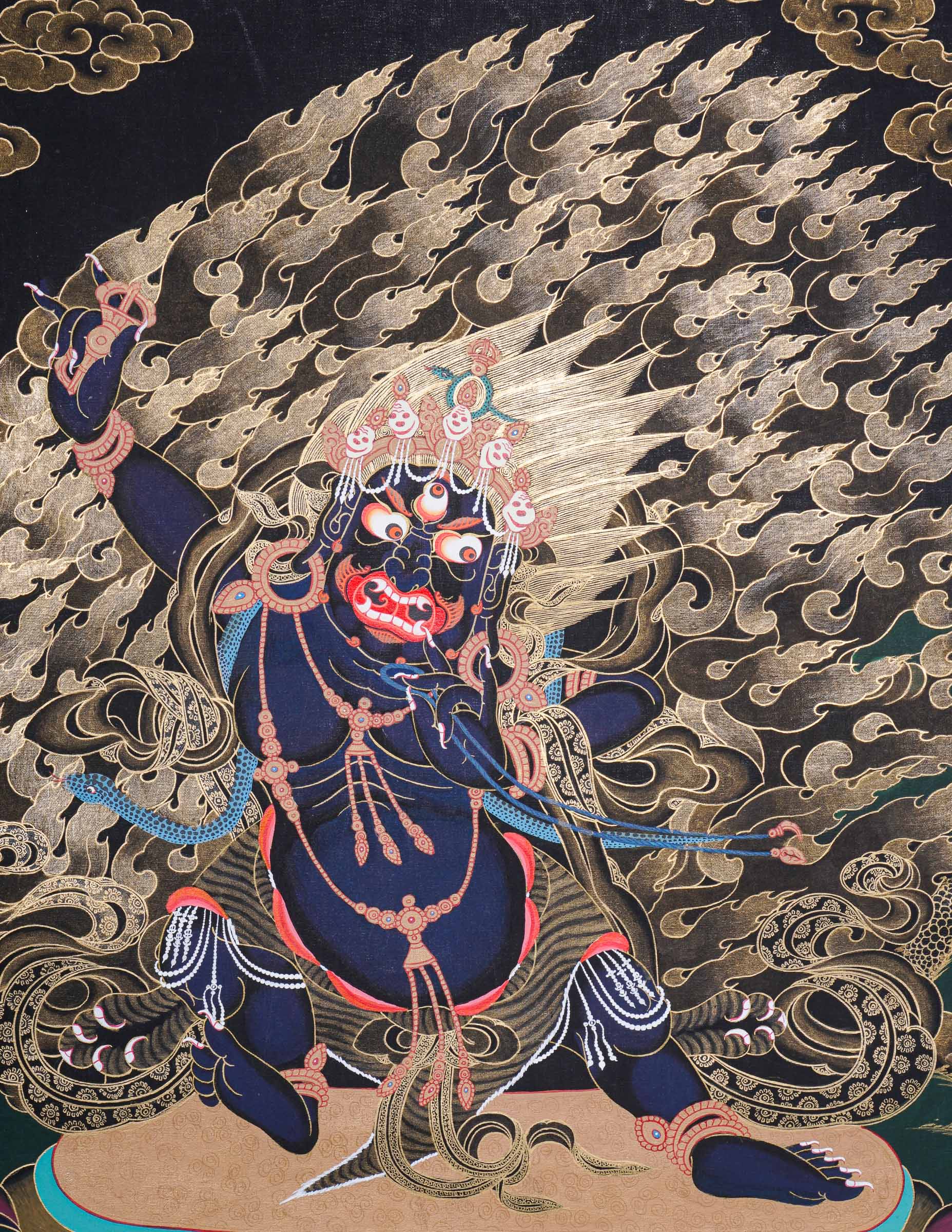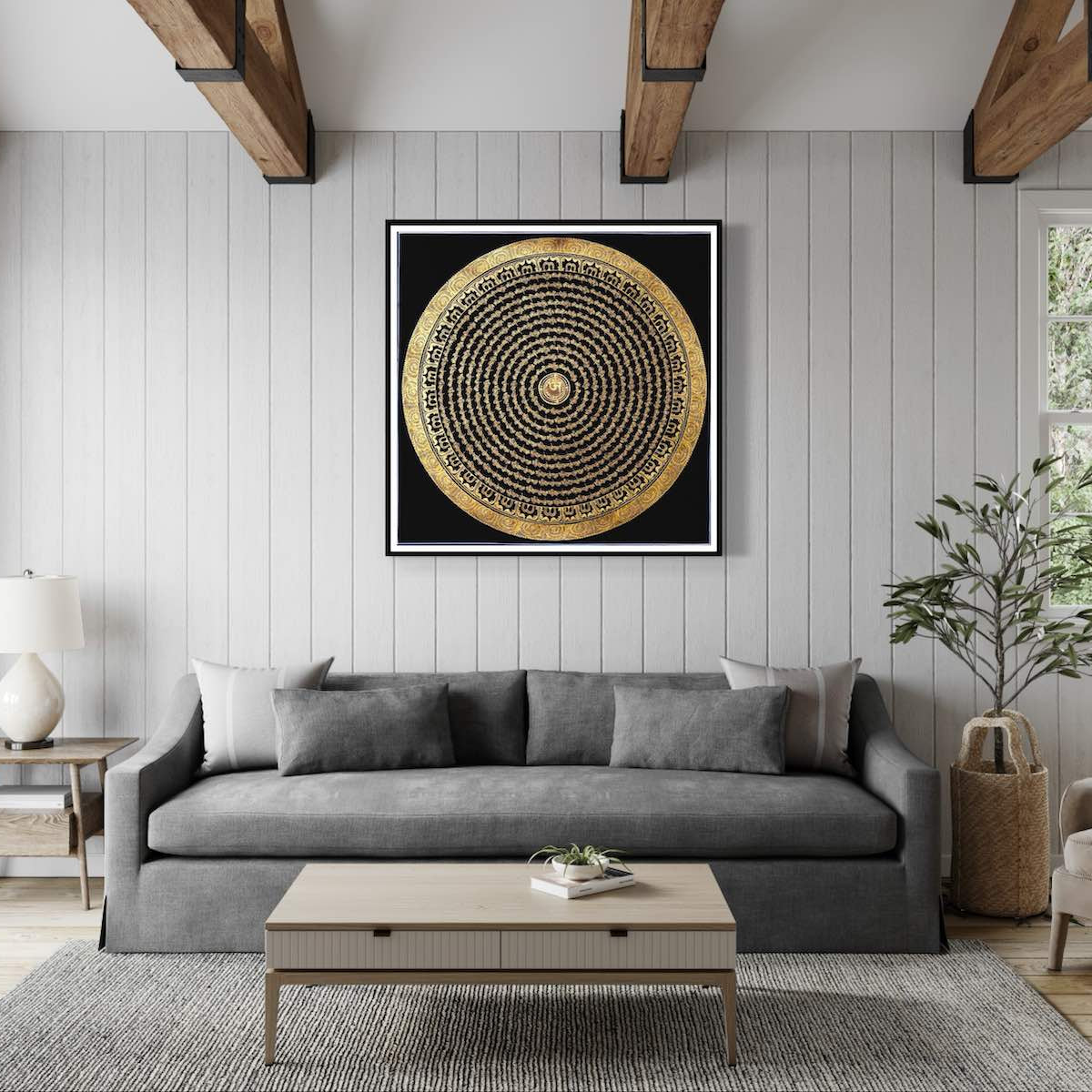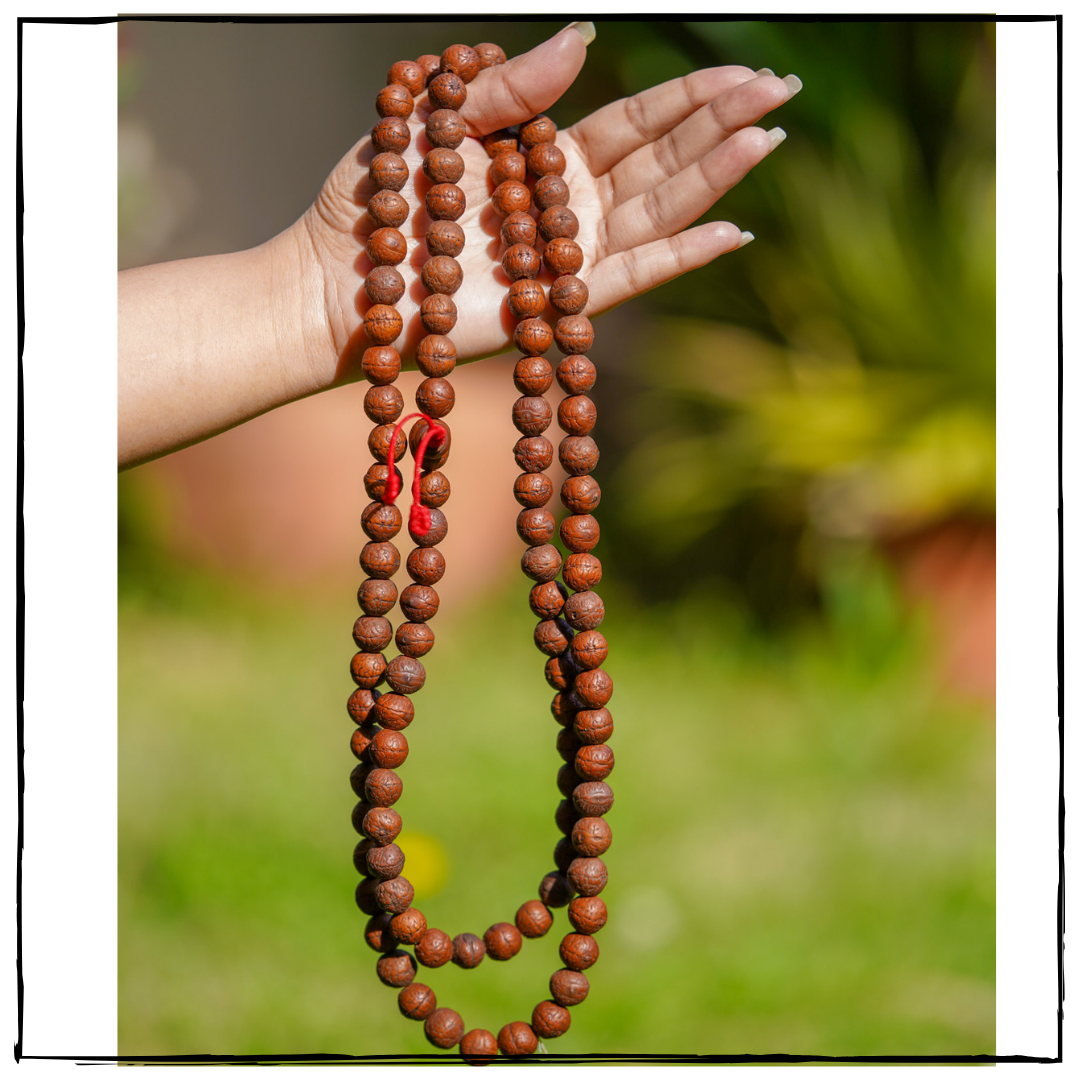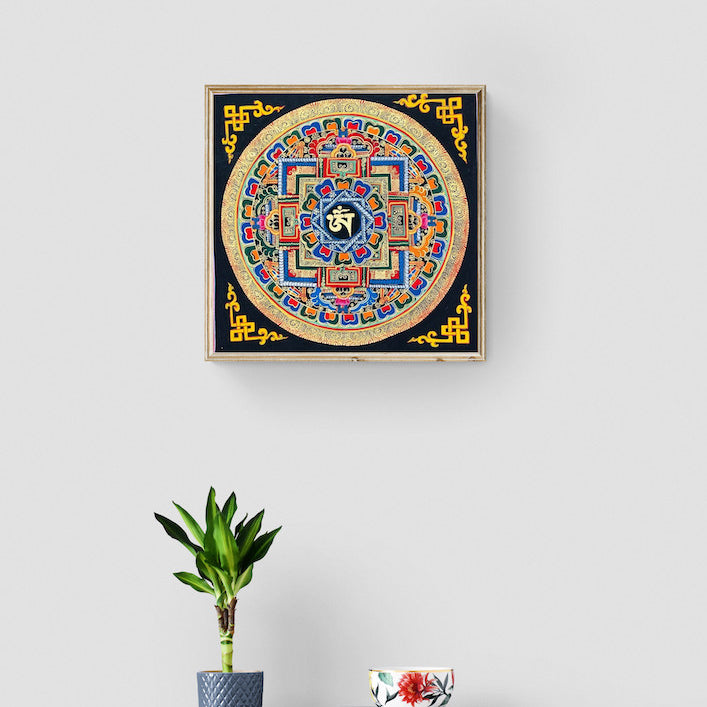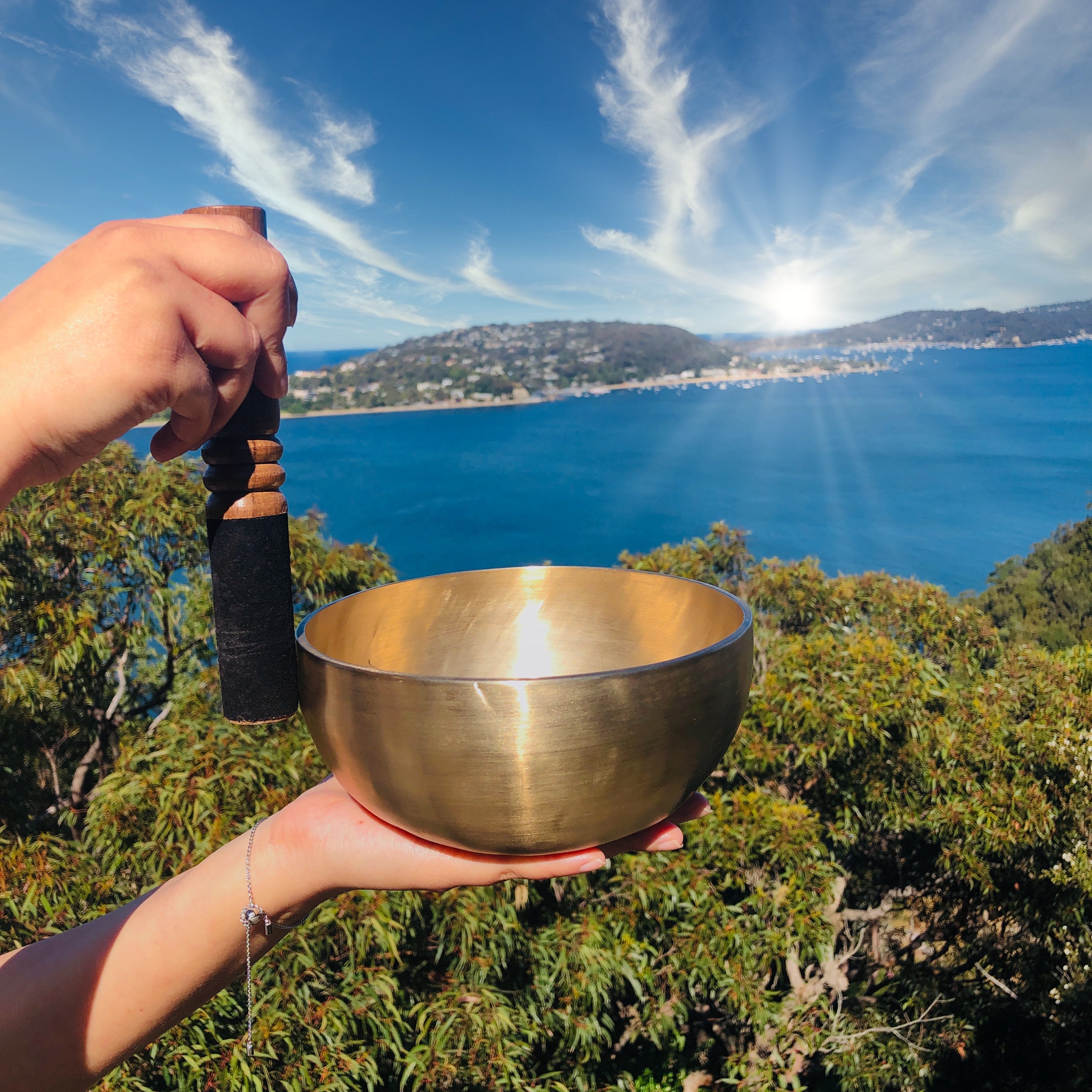Vajrapani Thangka Painting
Couldn't load pickup availability
Description
The Vajrapani Thangka is a classic Tibetan Buddhist painting that portrays Vajrapani, a strong Bodhisattva linked to enlightened action, protection, and the conversion of negative energies. This sacred piece serves as a central focus for meditation and spiritual development, allowing individuals to tap into Vajrapani's dynamic and transformative characteristics.
Key Features:
- Central Figure - Vajrapani : At the heart of the thangka is Vajrapani, depicted as a wrathful deity embodying the power of enlightened action. He is portrayed with a fierce expression, symbolizing his ability to conquer obstacles and subdue negative forces for the benefit of all beings.
- Posture and Mudras: Vajrapani's right hand holds a vajra (thunderbolt) for determination and overcoming obstacles. His left hand holds a bell (ghanta) for wisdom and cutting through ignorance and delusion.
- Wrathful Appearance: The depiction of Vajrapani shows a wrathful figure, wearing a crown adorned with skulls to represent the conquest over ego and ignorance. This fierce and compassionate presentation conveys a sense of urgency to liberate beings from suffering.
- Dynamic Posture: Vajrapani is often portrayed in a dynamic stance, representing his readiness to safeguard and guide sentient beings towards enlightenment. His posture conveys both motion and power.
Product Specification:
- Hand painted
- Size: 60 cm x 45 cm
- Base: Cotton Canvas
- Origination: Nepal

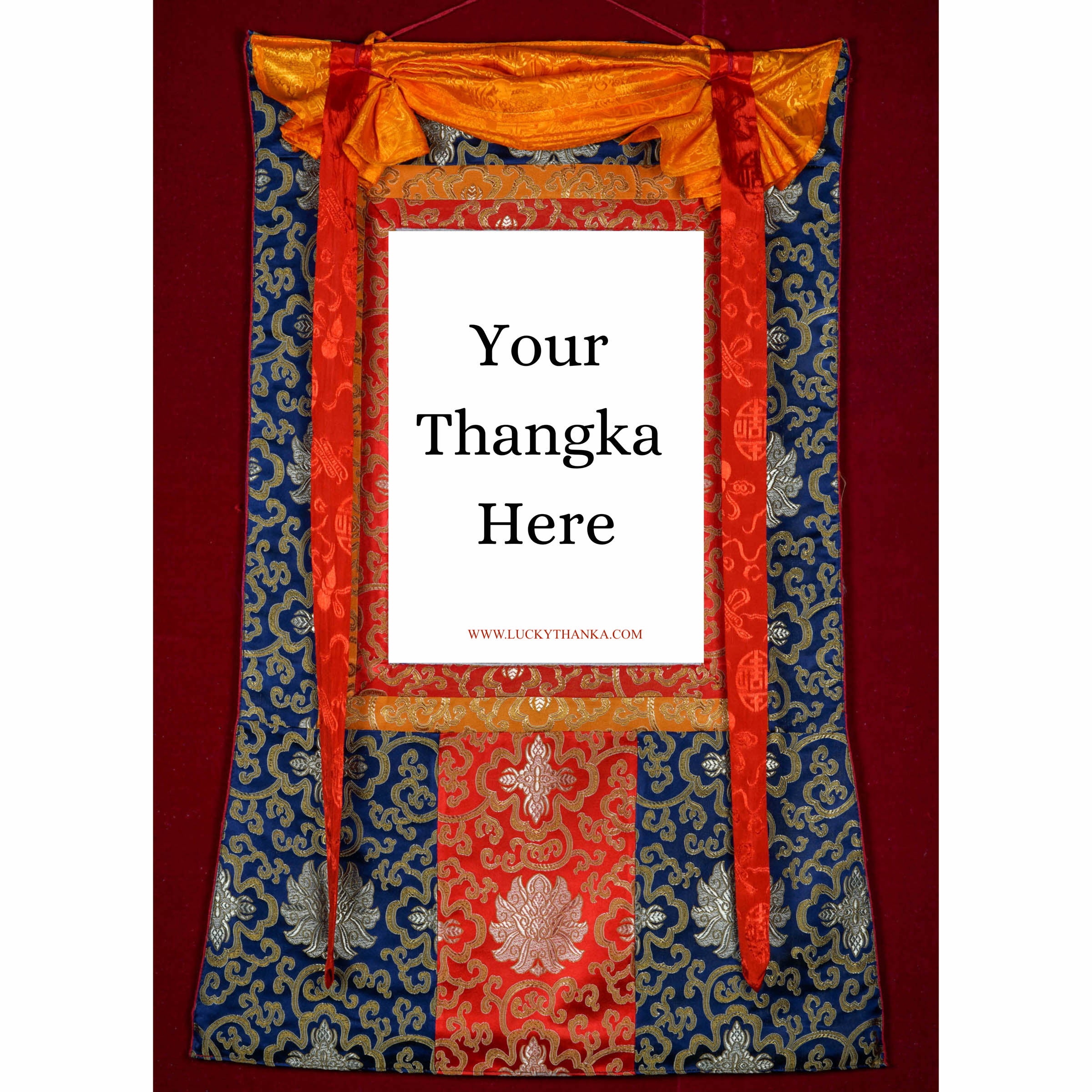
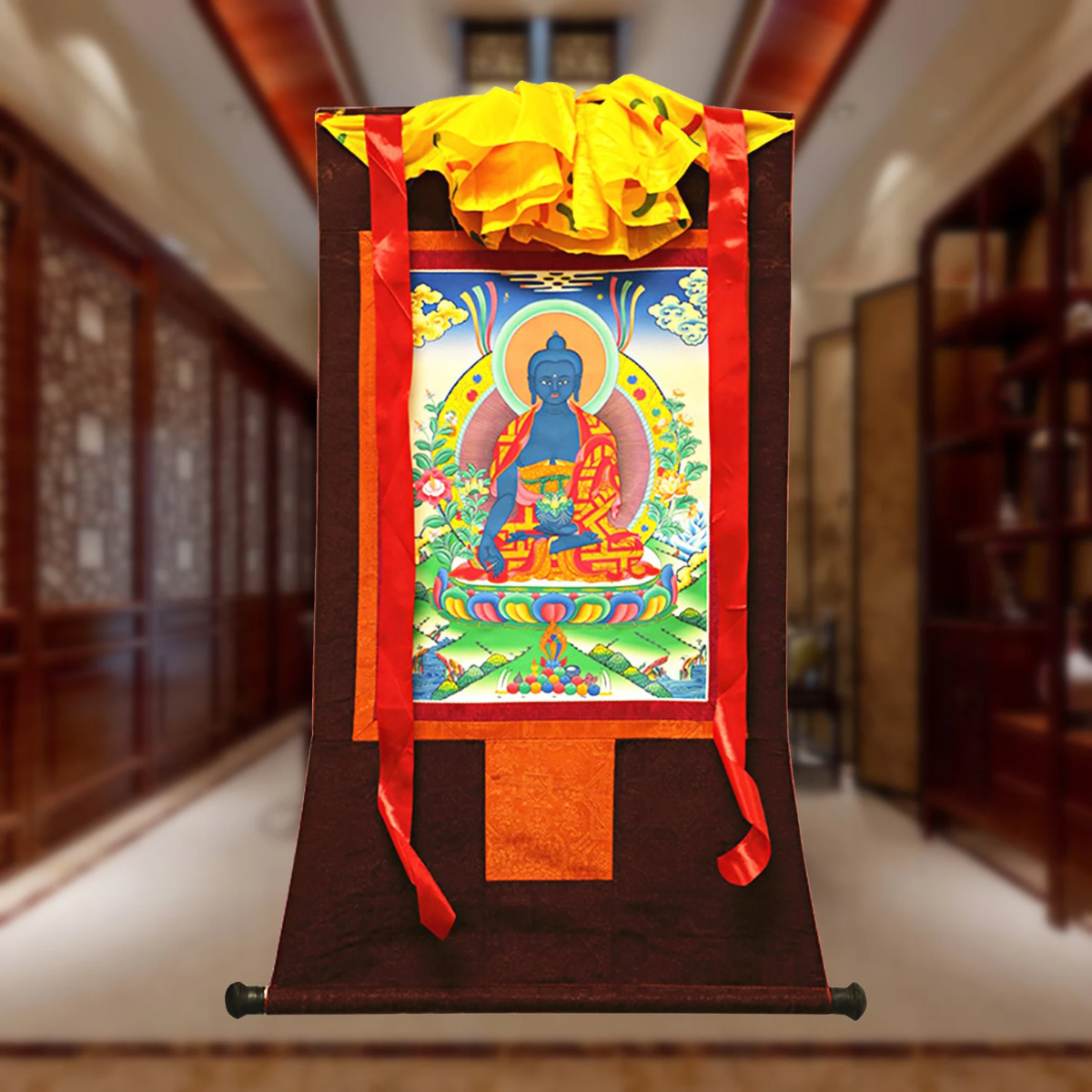
Hand Embroidery Brocade
Want to add a Brocade to your beautiful Thangka Painting? Traditional Style Brocade has been one of the most popular form of mounting as it has a greater religious merit.
Note: Make sure you have added the Thangka to your cart first.
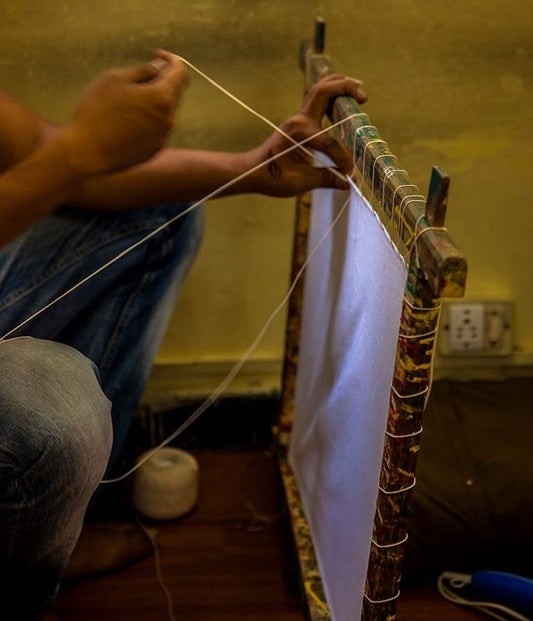
100% Cotton Canvas
Preparing the Cotton canvas before starting to paint a Thangka. This process includes washing, drying, stretching, sizing and everything needed to make a perfect base for the thangka to last for centuries.
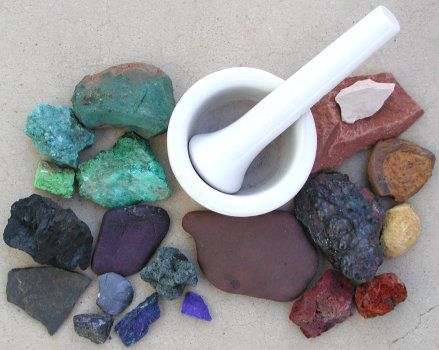
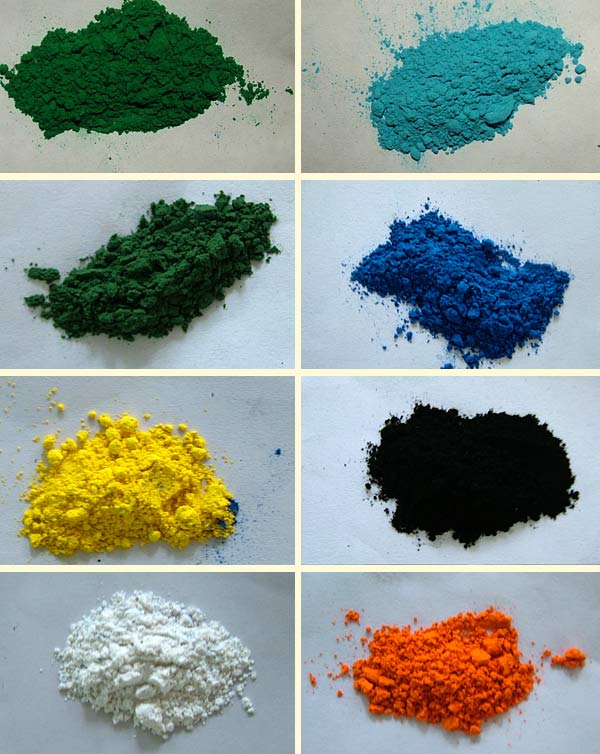
Natural Minerals
Thangka Paintings are painted using the natural minerals. These are firstly grind into the powder form and then used in the thangka as a paint.



